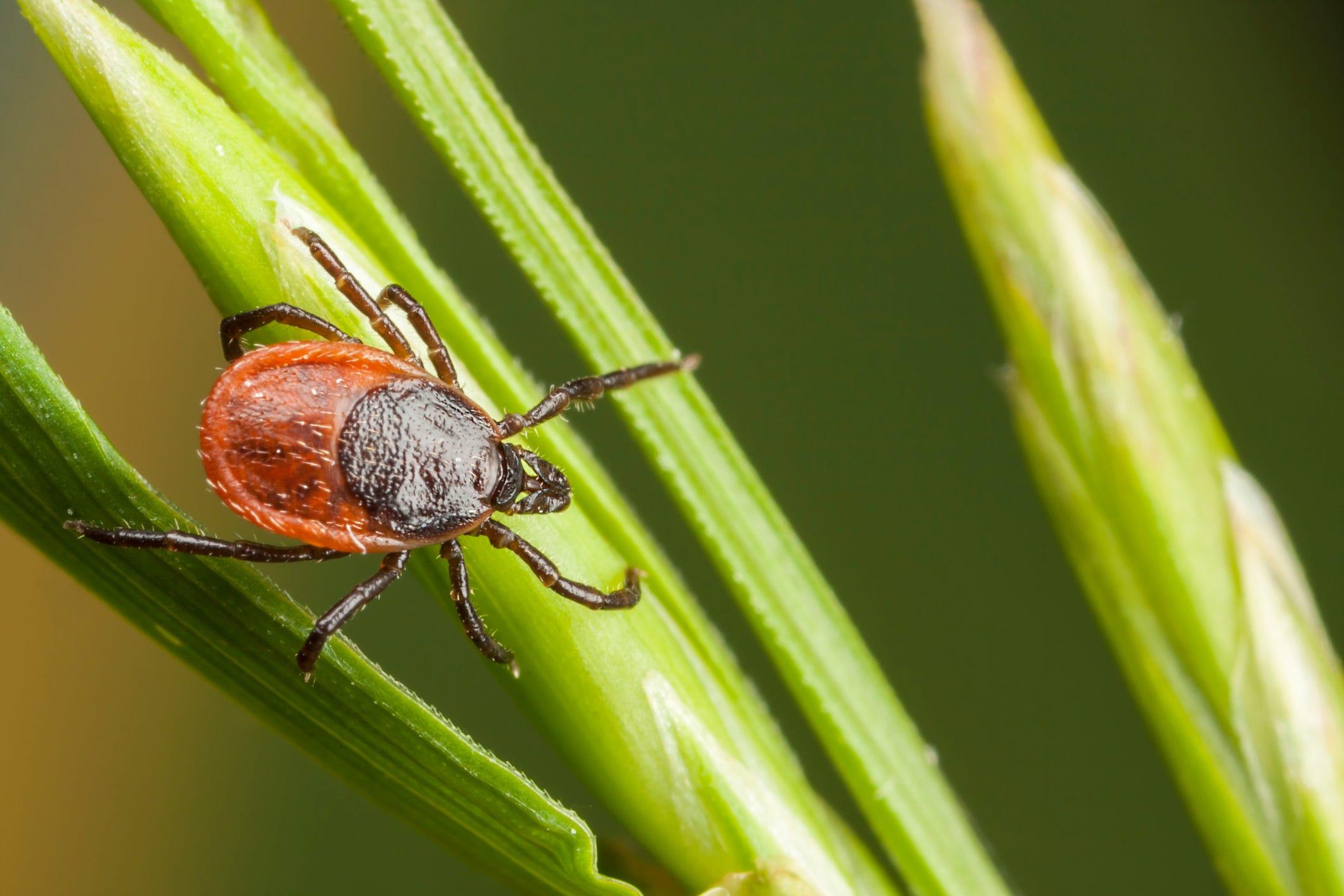
IT'S TICK SEASON: WHAT TYPES LIVE IN YOUR AREA AND HOW TO KEEP THEM UNDER CONTROL
With the weather slowly warming up, people and pets alike are bound to come across ticks, which could potentially lead to illnesses such as lyme disease.
While tick exposure can happen at any time of year, they are active mostly during warmer months, or April to September, according to the Centers for Disease Control and Prevention.
There are nearly 900 tick species around the world but only about 25 are considered important in the medical and veterinary sphere, the National Library of Medicine said on its website.
Start the day smarter. Get all the news you need in your inbox each morning.
And despite there being so many tick species, only a few species bite and transmit bacteria and viruses that make people sick, the CDC said.
Ticks that are mostly known to bite people include the blacklegged tick, the lone star tick and the American dog tick. Read more on ticks and what makes them so harmful below.
Ticks and diseases: What makes them so harmful?
Ticks carry pathogens that can cause diseases in humans. One of the most common disease ticks can cause is lyme disease. Symptoms include fever, headache, fatigue and a skin rash.
“If left untreated, infection can spread to joints, the heart, and the nervous system,” the CDC said about the disease, adding that it can be treated with antibiotics.
Another disease caused by ticks is anaplasmosis, which causes fever, headache, chills, and muscle aches. It is often treated with antibiotics.
Other tick-borne illnesses and symptoms include:
- Southern tick-associated rash illness – Red, expanding “bull’s-eye” lesions that develop around the site of the bite, fatigue, headache, fever and muscle pains
- Tick-borne relapsing fever (TBRF) – High fever, headache, muscle and joint aches
- Tularemia – Skin ulcers, inflammation in the eye, sore throat, mouth ulcers, tonsillitis, swelling of lymph glands in neck
Visit www.cdc.gov/ticks/diseases/index.html for a more thorough list of tick-borne illnesses.
What are the most common types of ticks in my region?
According to the Mayo Clinic, common types of ticks include:
- Black-legged tick AKA the deer tick – Mainly found in the eastern half and midwest region of the U.S.
- Western black-legged tick – Mainly found along the U.S. Pacific Coast.
- Lone Star tick – Mainly found in the southern and eastern U.S.
- American dog tick – Mainly found east of the U.S. Rocky Mountains; also found in parts of the Pacific Coast
- Rocky Mountain wood tick – Mainly found in the U.S. Rocky Mountain states and southwestern Canada
- Brown dog tick – Found throughout the entire U.S.
- Gulf Coast tick – Mainly found in U.S. states along the Atlantic Coast and Gulf Coast of Mexico
- Asian longhorned tick – Found in a handful of U.S. states
How do I spot ticks and protect myself?
The first step people can take to protect themselves from ticks is to know where ticks live and thrive, the CDC said.
They live in grassy, brushy, or wooded areas. They are also known to live on animals, which means humans can encounter them while outside walking dogs, camping, gardening or hunting.
“Many people get ticks in their own yard or neighborhood,” the CDC said.
Another precaution people can take includes treating clothing with products containing 0.5% permethrin, an insecticide that kills and repels ticks. It should not be applied to the skin. Some stores also sell permethrin-treated clothing and gear, the CDC said.
The CDC also said to avoid wooded and brushy areas with high grass and leaf litter and walk in the center of trails if you are outdoors.
Other ways to prevent tick-borne illnesses are to check your clothing, shower within two hours of coming indoors and check your body after being outdoors, the CDC said. If you’ve been in a tick-infested area, such as your backyard, use a mirror to check all parts of your body.
Be sure to check:
- Under the arms
- In and around the ears
- Inside the belly button
- Back of the knees
- In and around the hair
- Between the legs
- Around the waist
Are ticks dangerous to dogs or other pets?
Ticks can be harmful to dogs, the CDC said, adding that vaccines are not available for most of the tick-borne diseases dogs can contract. Dogs can also bring ticks into your home.
When dogs are infected with tick-borne illnesses, the symptoms may not be noticeable for 7 to 21 days or longer after the tick bite occurs.
“Watch your dog closely for changes in behavior or appetite if you suspect that your pet has been bitten by a tick,” the CDC said.
Other tips include:
- Checking pets for ticks daily (especially after they spend time outdoors)
- Removing ticks right away if you find them on your pets
- Reduce tick habitats in your yard
A tick bit me. Now what?
If you are bitten by a tick, remove it by taking blunt tweezers and tugging firmly near the tick’s head until it lets go of your skin, the Cleveland Clinic said on its website. Once the tick is removed, wash the bite area with soap and water.
The clinic added that it’s important not to crush the tick’s body or touch it with bare hands because doing so could expose you to bacteria.
Call your healthcare provider if you think the tick has been feeding on you for several hours or a day. Also call if you develop a rash, flu-like symptoms or pain or blistering.
Saleen Martin is a reporter on USA TODAY's NOW team. She is from Norfolk, Virginia – the 757. Follow her on Twitter at @SaleenMartin or email her at [email protected].
This article originally appeared on USA TODAY: It's tick season: What types live in your area and how to keep them under control
2024-05-04T16:05:42Z dg43tfdfdgfd